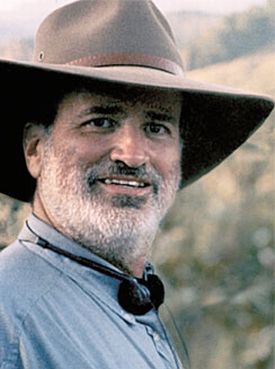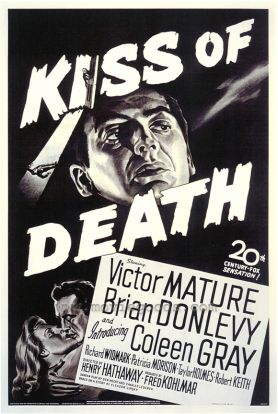Why 3-time Oscar nominee Malick is grossly overrated
From The Washington TimesEvery year when the Oscars come around, the Best Picture nominees include several that are very far from being the best of the year. The clunkers are nominated for a number of reasons — because they are commercially successful (Midnight in Paris) or politically correct (The Help) or because they are by popular or powerful Hollywood figures (Hugo, War Horse). And then there are the nominees who make the cut just because they are bad — boring, lengthy, incoherent and hard to understand — but their badness is taken as a sign that they must be high art and their difficulty as a token of intellectual brilliance.
Such a movie is current nominee Terrence Malick’s Tree of Life, the latest cinematic meditation on metaphysics from ponderous writer-director Terrence Malick, the enigmatic recluse whose critical standing seems to rise in inverse relation to his profitability, productivity and popular appeal. Despite repeated financial losses on box office duds like The Tree of Life and The New World in a career punctuated by long stretches of professional hibernation, Mr. Malick, a three-time Oscar nominee, has accumulated a collection of critical superlatives, festival honors and peer awards as bounteous as his filmography is skimpy..
There are basically three reasons why Mr Malick has acquired the reputation of an underappreciated cinematic genius. One is that he was a Rhodes Scholar who graduated with honors in philosophy from Harvard and so is certifiably smart. A second reason is that after his second film, Days of Heaven (1978), he was silent for two decades before The Thin Red Line (1998). Obviously he has some kind of interesting psychological hang-up and so may be certifiable, period. At any rate, everybody knows that a troubled genius is a genius indeed. The third reason is that his first film, Badlands (1973) is an undeniable masterpiece and was not given the recognition it deserved when it came out.
But even in Badlands, based on the Charles Starkweather murders in Nebraska and Wyoming in 1958 but moved to South Dakota and Montana, you could see the beginnings of the bad habits that were to make his later films so overrated once he was in a position to indulge them to the full. These included excessive use of voiceover narration, self-consciously beautiful photography that often seemed gratuitous and overshadowed the story he was supposed to be telling and a more general casualness or lack of interest in mundane details of plot and characterization.
In Badlands these were not serious problems and even helped give the movie a certain freshness and originality. But, having made only four movies in the next 40 years, Mr Malick simply didn’t have enough practice at his craft to see these faults as faults. They hardened into mannerisms. In retrospect, we can also see in Badlands hints of the two themes an over-fondness for which made even more of a mess of his later films. These were the essentially banal insight that human life and concerns are dwarfed by the awesome power of nature and an idealized portrait of young people enjoying a sexual or pre-sexual idyll of innocence in an Edenic natural setting which comes to a tragic end.
In Badlands, the forest paradise of Martin Sheen and Sissy Spacek was founded on his brutal murder of her father. This lent a certain astringency to the cinematic portrait of their brief life together. Even the sex was innocent in a much more realistic way than that between Captain John Smith (Colin Farrell) and Pocohantas (Q’Orianka Kilcher) in The New World (2005). “Gosh, what was everybody talking about?” says a bewildered Holly (Miss Spacek) after their first encounter.
“Don’t ask me,” replies Mr Sheen’s Kit.
Part of the problem was that Mr Malick was writing, and filming, about what he knew when his subject was South Dakota in 1958 but not when it was the English settlement of Virginia four hundred years ago. In The New World, his native Americans were so idealized that they might have called a blush to the cheeks of Kirkpatrick Sale. In Days of Heaven, set in the 1910s, and The Thin Red Line, set during World War II, he was also too far away from familiar ground. And in the latter movie his philosophical GIs on Guadalcanal, vastly exaggerated out of James Jones’s fictional originals, rival the noble savages of The New World for sheer implausibility.
In all these movies his real subject was himself and his ideas about life, death and immortality, but they came alive only when he was able to make the characters look like real people and not just vehicles for his philosophical reflections. The promise of Tree of Life was that in it he was once again turning to things of which he had first-hand experience. The narrative part of the film was in fact autobiographical, telling the story of Mr Malick’s own childhood in Texas. Brad Pitt plays his father, Jessica Chastain his mother.
There are occasional flashes of the talent on display in Badlands in this part of the film, but the problem is the other part, which overshadows it and purports to take us as far away from observed experience as it is possible to get: to the cosmic, geological and biological origins of the earth and the creatures on it — and then on to some unearthly eternity on a heavenly beach. Not only is this in itself a kind of cinematic hubris, an assumption by the film-maker of a Godlike point of view, it has nothing to do with the interesting part of the movie — apart from making that same dull, commonplace contrast between natural bigness and human littleness and providing a hopeful eternal presence to his lost loved ones. We can see why he might have wanted to do that but not why he thought it would interest anybody else.
But then, as a certified genius and embodiment of Hollywood’s idea of cinematic art, he must have thought he didn’t have to worry about interesting ordinary movie-goers.
Discover more from James Bowman
Subscribe to get the latest posts to your email.







